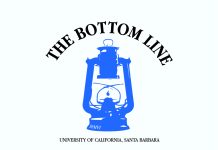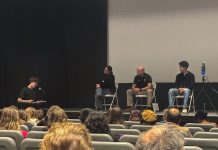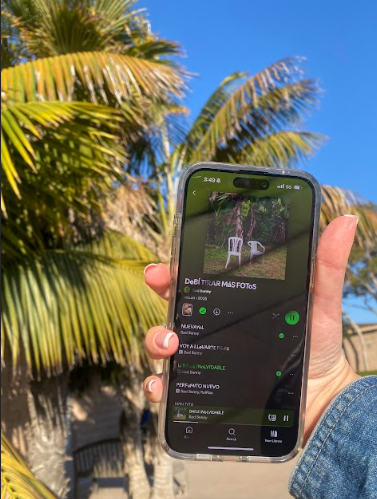Cassidy Esquivel
Contributing Writer
Earlier this month, Benito Antonio Martínez Ocasio, known as Bad Bunny, released his sixth studio album “DeBÍ TiRAR MáS FOToS” (DTMF). Following its release, DTMF was immediately a hit. Diehard fans and casual listeners alike raved about the 17-track album, which has recently climbed to No. 1 on the Billboard 200. The album has garnered overwhelming praise and received a perfect score in a review by Rolling Stone Magazine. One thing that fans love about Bad Bunny is his pride in being Puerto Rican and Latino, which he showcases in DTMF like never before. Bad Bunny’s boldness in his music, lyrics, and political messages are what make DTMF stand out from his previous releases, and they are what have made this album such a success.
Although Bad Bunny has expressed his pride for his country in previous songs, the central theme for DTMF is Puerto Rico. His album is created from a mix of modern and classic music, specifically salsa and plena, which are iconic genres in Puerto Rico and the Caribbean. The first song on the album, “Nuevayol,” opens with a salsa rhythm sampled from El Gran Combo de Puerto Rico’s “Un verano en Nueva York” remixed with a reggaeton beat. For many fans, this intro was an exciting surprise upon first listen, because it’s unique in comparison to Bad Bunny’s past work. Between the mixed elements of salsa and reggaeton, this opening sets the rhythmic theme for the album.
Bad Bunny has included elements of traditional Latin beats in his songs in the past, but “Baile Inolvidable,” from his new album, is a true salsa. The song starts with melancholic lyrics and an electric, synthesized melody but then adds a salsa rhythm that creates a bittersweet feel. You can’t help but get up and dance even though the lyrics are about heartbreak. These classic music genres are often regarded as part of the older generation, but young people have reacted excitingly to this salsa revivalism. It’s not often that an “old” music genre like salsa comes back into popular culture almost a century after it was created. As the biggest star in Latin music right now, I predict that Bad Bunny’s influence among Latine listeners and the music scene will contribute to the reemergence of salsa.
“Debí Tirar Más Fotos” translates to “I Should’ve Taken More Photos.” On The Tonight Show, Bad Bunny explains what the title means to him: “I should … appreciate more the moment, the present. I should have appreciated more the people who [were] around me, people who love me … appreciate more the [blessing] that we’re here right now.” The song “DtMF” perfectly encapsulates the theme of the album. First off, the artist keeps up his theme of using Puerto Rican rhythms in the song, which he says is like “a new plena … a very old rhythm [that] just sounds new and different” because of what he’s doing with it, via The New York Times. This song is applicable to anyone reflecting on memories that they would like to re-live. Immediately following the album’s release, “DtMF” was trending on TikTok, and fans started sharing photos of their own cherished memories alongside the chorus of the titular song: translated as “I should’ve taken more pictures when I had you. I should’ve given you more kisses and hugs whenever I could.”
Relationships, childhood, your parents — none of these things last forever. Even the place where you were raised will change and may, one day, be unrecognizable. That’s why we have to live in the moment, and appreciate everything around us.
Alongside the album release, Bad Bunny shared his first short film, also titled “DeBÍ TiRAR MáS FOToS.” He directed and wrote the script alongside Arí Maniel Cruz Suarez. The film follows the story of an elderly man adjusting to the gentrification of Puerto Rico while reminiscing about “how it used to be.” The video features stunning views of the country, while also exposing the effects of American colonialism. This idea of experiencing change and looking back at the past is intertwined with Bad Bunny’s emotions in this album and his perspective on a changing Puerto Rico.
In DTMF, Bad Bunny uses his music as an outlet to explore different political topics, specifically in relation to the subordination of Puerto Rico by the United States. The island has been a U.S. territory since 1917, and this relationship has been controversial for some time. On Bad Bunny’s YouTube, the visuals for the songs from DTMF are accompanied by information about different events in Puerto Rican history, ranging from colonization, to the creation of reggaeton, to the devastating effects of Hurricane Maria. This is another example of how the artist is centering Puerto Rico in this album: not just by sharing their music and culture, but also by sharing their history. The song “Lo Que Le Pasó A Hawaii” highlights how many Puerto Ricans are being pushed out of their country because of poverty and lack of opportunity. He sings (translated), “They want to take my river and my beach too. They want my neighborhood and grandma to leave.” These lines allude to the gentrification of Puerto Rico into a tourist location, which is comparable to the colonial trajectory of Hawaii. In this song, Bad Bunny affirms that he will hold onto his country and his culture despite the oppressive, colonial forces.
Bad Bunny has created a bridge between the old and the new by repopularizing music from his parents’ generation and focusing it on the social issues that Puerto Ricans have lived through. Part of me hopes that Bad Bunny will keep up this theme for his future music releases, but his creativity is boundless, and whatever comes next is sure to continue to break barriers. “La Mudanza” is an upbeat salsa song that asserts Bad Bunny’s pride in his country and his culture as he sings (translated), “Here, people were killed for raising the flag; that’s why I carry it everywhere.” It’s the last song of the album, and it’s the perfect way for Bad Bunny to finish it off: loud and proud about who he is. In the outro, he states that “No one will kick me out of here, I’m not going anywhere.”











